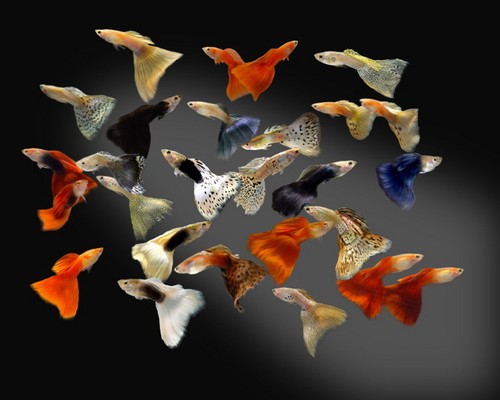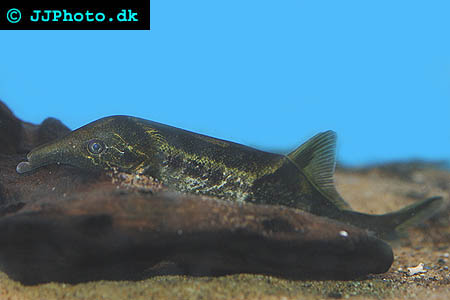- Hjem
- Forum
- Levendefødere
- Hva har skjedd med guppy i norge
Hva har skjedd med guppy i norge
Er flyttet tilbake til Norge etter mange år i California. Etter en del mas fra barna har vi nettopp anskaffet et 240 kar her i Norge som nå er innkjørt... Stor var skuffelsen da vi kom til første zoo butikken, De flotte guppiene som vi hadde i i USA må jo være en annen rase i butikkene her ?? vi var innom 3 butikker og samtlige steder var det det samme, også de som jobbet der hadde liten interesse for guppier. Skjønner jeg godt hvis det er typen de har. I USA syntes vi det var utrolig fasinerende hvilken type yngelen vokste opp til når en for eks hadde en knallsort (moscow black) og fullrød...osv.
Noen som har noen gode innspill til hvor en kan få tak flotte oppdretts guppier og ikke det som er i butikkene.. Takker !
Noen som har noen gode innspill til hvor en kan få tak flotte oppdretts guppier og ikke det som er i butikkene.. Takker !
Postet 02.11.08 kl 23:33
Postet 02.11.08 kl 23:45
Det skal være mulig å få bestille spesielle fargevarianter på guppy. Ihvertfall har jeg sett at de finnes på listene uten at jeg dermed husker akkurat de fargene du nevner. Dessverre så er det ofte liten interesse fra butikkenes side når det gjelder guppy og det virker som det vanligvis blir bestilt miks av forskjellige farger. Antagelig er disse billigere både i innkjøp og i utsalg, og siden interessen blant flesteparten av guppykjøperne er laber for mer spesielle former og farger så blir det vel ingen endringer. Det skader likevel ikke å spørre om det er mulig å få bestilt noen etter egen smak.
Ellers så kommer jo Tom med et veldig godt tips. Private oppdrettere har i tillegg gjerne både vakrere og friskere fisk enn de du får i butikken.
Ellers så kommer jo Tom med et veldig godt tips. Private oppdrettere har i tillegg gjerne både vakrere og friskere fisk enn de du får i butikken.
Postet 04.11.08 kl 16:34
Postet 04.11.08 kl 19:53
Inaktiv bruker

Hva er forskjellen på guppy og endlers guppy?
Postet 05.11.08 kl 13:10
iDuddits.Hva er forskjellen på guppy og endlers guppy?
fra wikipedia
History
Poecilia wingei is a colorful fish, similar to (and closely related to) the guppy. The species was first collected from Laguna de Patos in Venezuela by Franklyn F. Bond in 1937, and rediscovered by Dr. John Endler in 1975. The latter were the first examples of this fish to make it to the aquarium trade. More have been collected since then, notably by Armando Pou, to expand the captive breeding stock. The original Laguna de Patos population is threatened by runoff from a municipal garbage dump. Though it is rare in pet shops, this species is seen from time to time today in the aquaria of enthusiasts.
I grew up in the southeast of Brazil far away from Venezuela and did quite regularly collect them from the local rivers, therefore I think their range might be a lot bigger than previously thought!
Although not yet taken up into the IUCN Red List of endangered species, they are in danger of extinction in the wild as humans enter their natural habitat, polluting and destroying it.[citation needed]
[edit] In the Aquarium
Endler's livebearers are hardy and undemanding in the aquarium though they prefer hard, warm water. The warmer the water, the faster they will grow; however this also seems to shorten their lifespan. They can be kept at 18–29 °C (66–82 °F), but their optimum temperature seems to be 24–27 °C. This is slightly higher than their guppy cousins which prefer 23–25 °C. They do best if kept in tanks with plants (preferably live, but fake will do) to give them hiding places and (although they may be less likely than guppies to eat their own young) give the fry a better chance at survival. Some of them are determinedly suicidal jumpers, so a cover on the tank is a must.
[edit] Breeding
The colors of Endler's livebearers are very intense, especially the black, orange, and metallic green colors. Their natural patterns are highly variable, though many display a double sword tail. Breeders have developed numerous lines displaying specific patterns and colors, such as red chest, black bar, peacock, yellow sword, etc.
They are prolific breeders like their guppy relatives. They give birth to live young approximately every 28 days. The fry can be fed powdered fry food, baby brine shrimp, and crushed flake food. The will also nibble on the layer of algae and microorganisms that forms on aquatic plants. Even adult brine shrimp are not beyond their capability, as several fry will gang up on a brine shrimp their own size and tear it apart. The males will start to show color in 3-4 weeks, but it can be several months before they develop the full depth and richness of color that characterizes Endler's.
[edit] Hybrids
Endler's can be crossed with guppies and the hybrid offspring are fertile. This is considered to dilute the gene pool and therefore is avoided by fish breeders who wish to maintain pure strains. Many fish sold in pet stores as Endler's livebearers are actually these hybrids. Some breeders are intentionally hybridizing Endler's with fancy guppies to create fish with the characteristics of both. In addition, as reticulata has been found in the same bodies of water as wingei, it is possible that natural hybridization may also occur in the wild.
Postet 05.11.08 kl 13:16
Aquamanias.no
Han har vel fått inn en del guppy som ikke ligner på de jeg ser mest i butikkene. Så du kan jo se på siden hans og kjøpe noen der.
Postet 05.11.08 kl 13:19





